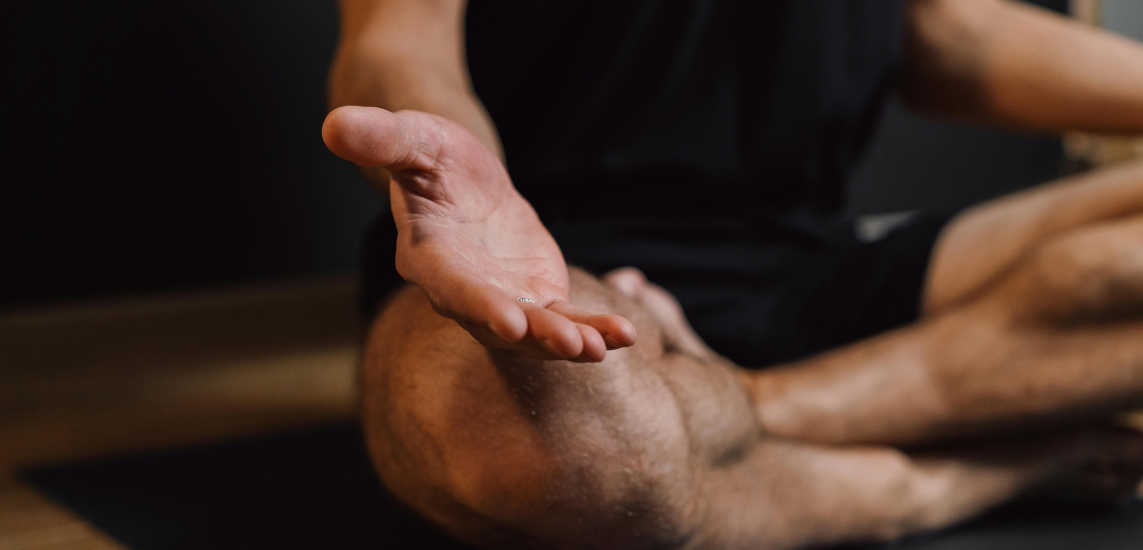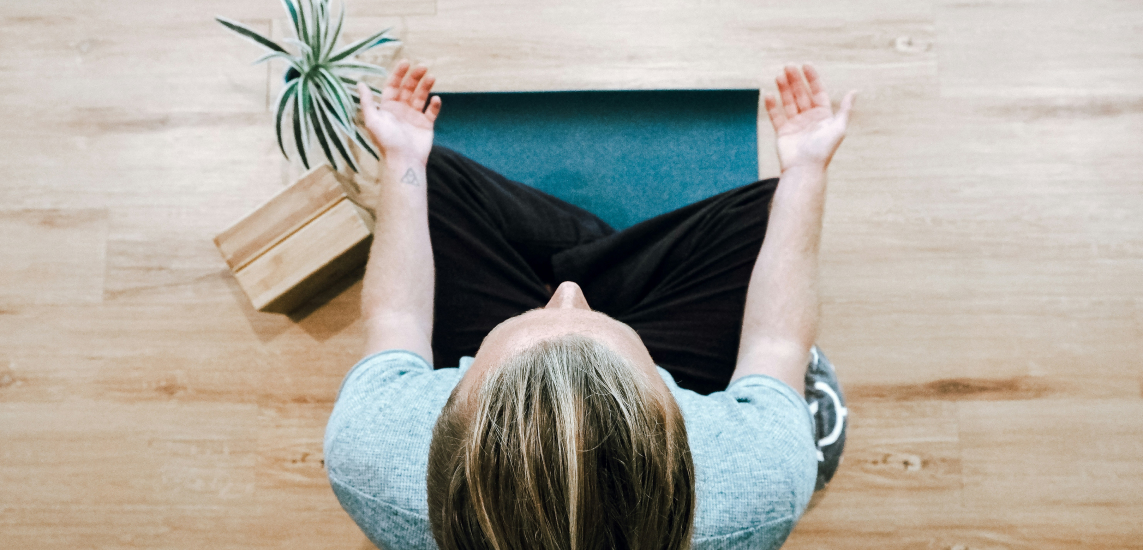Mindfulness, being present, stress reduction, clarity of thinking. Benefits of meditation – but did you know that journal writing creates many of the same outcomes? In this blog, I will explore the practice and benefits of mindful journaling and explore how to bring meditation to your writing practice and how to bring writing to your meditation practice.
What Is Reflective & Mindful Journaling?
The first step in blending the benefits of meditation and journal writing is to think about your approach to writing. If your experience with journal writing is tied mostly to a ‘Dear Diary…’ type prompt there’s good news – there are many ways to bring variety, depth, and self-directed growth through mindful journaling.
Mindful journal writing is therapeutic, dynamic and reflective. Kay Adams, author of Journal to the Self explains that the secret is to begin with Intent (‘What’s going on for me right now?’), match with Attention (‘What journal technique would help me explore?’), and finish with Action (‘Upon reflecting on what I’ve written, what’s my next step?’).
The practice of reflective journal writing is a simple three-step process:
- Begin — Be present: take some deep breaths, do yoga, reflect on a photo, listen to a song, take a walk. Let your writing prompt find you.
- Write – Shorter is better! 5-10 minutes is just enough.
- Reflect – Take a few more deep breaths, now read and be present to what you have written. What surprises you? Where does it land in your body? Are you sensing any emotional response? Any bright ideas coming together? Now write one last line of reflection. That’s where the mindfulness, insights and self-coaching come from!
You can also learn more about reflection writing in the talk below:
- Reflective Writing In Your Journal Laura Stukel 4:11
Read more: Writing coach Carolyn Ziel shares a story from her personal journal and underlines the power and benefits of writing that can change your life —from becoming smarter to healing wounds.
How To Bring Journal Writing Into Your Mediation Practice
Meditation is a beautiful way to begin any session of mindful journaling, or a write in your journal is a great way to end a meditation session depending on your intent. Either way, some tips can help you blend the practices:
- Set up your writing station first. Of course, you’ll want to have your favorite notebook and pen or a laptop nearby. But also think about where and how you want to sit following your meditation. Prepare a spot where you can write comfortably, reread and reflect over a span of about 15 minutes.
- Be ready for surprises. Writing from a mindful state often evokes the more abstract, colorful, creative and intuitive side of our thinking. You may also wish to have pencils or markers nearby just in case you find yourself gravitating to symbols, doodles, colors, etc.
- Absorb yourself into meditation. Be fully present to whatever practice you chose. Add a few moments of transition if it suits you.
When you are ready, follow the three steps of reflective journal writing.
- First, begin. Be present to this bridge moment between two practices. Close your eyes and take some deep breaths – your writing inspiration could unfold in different ways.
- Follow the inspiration that comes to you. If you are drawn directly into writing, follow the pen and write whatever comes, even if points are not logically connected. Or, you may feel drawn to flip the page a new direction, write in a circle instead of with lines, flow with a different style of handwriting or find yourself incorporating doodles or symbols. If a starting point is emerging, sit and be present to it for a moment – it may be a color, symbol, image or word that is standing out. Or it may be that you are present to an experience of an emotion, a memory, or a sort of waking dream. Beginning is about being present so your prompt can find you. If you prefer a point of focus, close your eyes and sit with the words, “What’s going on?” for a few breaths.
- Once your prompt is present, write (or doodle). Write quickly and follow whatever comes. If you find yourself slowing down to correct grammar or to say the ‘right’ thing take a few deep breaths and come back to writing just for yourself. You can focus on the words, “No wrong, just write” if it helps you resettle and write in the moment.
- Finish writing when it feels done. Watch for a shift where you feel like you’ve captured what’s on your mind for this moment. Or try setting a timer for 5-8 minutes. It seems counter-intuitive but a short deadline actually opens the brain to focus on what’s most important. When the timer goes off, be done wherever you are at.
- Reflect. This is the most important part! When your writing is done, be present to it for a moment. Hold your journal, or touch your keyboard. Take a few, nice deep breaths. Now read your journal entry, with your full attention on what you have just written. Notice what surprises you or stands out. Every reflection takes you to a different place – from the emotional to the physical to the idea-generating.
- Add one more line of reflection to your journal write. Kay Adams offers the following reflection writing prompts, or try your own. As I read this:
- I notice…
- I’m aware of…
- I’m surprised by…
- I’m curious about…
- My follow up is…
- Add one more line of reflection to your journal write. Kay Adams offers the following reflection writing prompts, or try your own. As I read this:
Read more: Writing is an inside job and can, therefore, unfold healing, almost therapeutic powers. When working with her clients, writing coach Carolyn Ziel keeps coming across the gentle ways of healing through writing.
How To Bring Meditation Into Your Journal Writing Practice
Meditation is an excellent way to bring diversity of inspiration to spark your writing.
You can also learn about bringing meditation to journal writing in the talk “Meditation for Journal Writers” on the Insight Timer app or below:
- Meditation For Journal Writers Laura Stukel 2:15
- Begin with an entrance meditation. Inspiration abounds! Take yourself far beyond the tired and limited ‘Dear Diary…’ prompt. Begin by considering your Intent for journal writing (‘What’s going on for me right now?’), match with Attention (‘What entrance meditation would help me explore?’).
- Try a springboard meditation. Being present to things that motivate, inspire or bring joy can be a starting point for your writing. Listen to a favorite song, enjoy a piece of art from all of your senses, walk a favorite path with new eyes, or read the inspired passage from a contemporary writer.
- Use a visualization meditation to begin from a place of a new perspective. Listening to a focused meditation designed specifically to inspire your journal writing can be particularly empowering and effective. Visualization meditations can take your mind on a journey to guide your writing based on the inspiration you glean:
- Time-travel. Journal writing entrance meditations can take you back or forward in time to see things from a different perspective.
- Wisdom from Influencers. Entrance meditations can call forward the people present in your life, those who inspired you from the past, or whom you connect with even if you do not know them personally, to inspire new learnings.
- Dreaming while awake. Entrance meditations can use vivid imagery to help your brain see the bigger themes, symbols and insights we are sometimes too busy to observe.
- Capturing joy. Entrance meditations can help you focus all of your senses to relive surprising snippets and memories that stay with us and have deeper meanings and connections than we may realize on a day-to-day basis.
- Create your own visualizations for endless applications. The best part of an entrance meditations – even one you create for yourself in your mind — is how they can take you to new vistas or conversations. All you need to do is envision the ‘character’ who can author your journal write. Sit quietly and relax your breathing for a few moments. Experience your author character, using all of your senses and intuition. Then write. For example:
- Write about yourself one year from today for goal-setting.
- Write about yourself from the perspective of a person who is pushing your buttons for new insight on the relationship.
- Write about a problem you are experiencing from the voice of your best friend who is observing you.
- Sketch out a dialogue between you and a cherished mentor (living or deceased, real person, historical or fictional) where you ask questions from deep within your heart and receive the answers.
A visualization meditation is a way to begin a mindful journaling practice. As mentioned above the next two steps are to write and then reflect. For writing, plan to follow your pen or keyboard until you feel a shift that says you are done. Or, you may wish to set a timer for 5-8 minutes which is a magical way to trick the brain into getting to what is most important. When the writing is done, sit and be present to the experience. Close your eyes and take it what it feels like to hold your journal or touch your keyboard. Take a few nice, deep breaths. Then read what you have written. Be present to the visualization experience, and the writing experience and the words on paper. Now reflect, using the reflection writing responses as above. Start with: “As I read this I…”
Journal writing entrance meditations can seed your own self-growth and allow you to solve problems in new way. You can find my visualization meditations just for mindful journaling on Insight Timer or right below:
- Journal Entrance Practice: Perspective Write Laura Stukel 7:28
- Journal Writing Meditation: Time Capsule (For The Past Month) Laura Stukel 4:55
Mindful Journaling: It All Starts With Intention
The benefits of a meditation and a journal writing practice are complimentary. With some easy steps you can blend the benefits from both and experience greater mindfulness, peace, self-direction and personal growth.
An easy way to blend the two is to remember the practice of begin, write, reflect. Beginning with intent will allow you to clear the mind, be present to the writing moment and find a springboard of inspiration into what’s most important for you to write about right now. Writing is the experience of getting thoughts on paper. It is a transition moment, not the most important moment. Finishing with reflection creates the real benefits we seek: mindfulness and growth from a deep place of inner stillness, intuition and perspective.
You might want to join the “Writing & Journaling” group on Insight Timer to connect with others that seek to combine the benefits of meditation and journal writing. In the app, go to your profile and search in groups.
Read more: Inspiration often both leads to and results from creativity. Caroline Avnit shares important insights into finding inspiration to manifest and create the life we desire.






-1.jpg)
